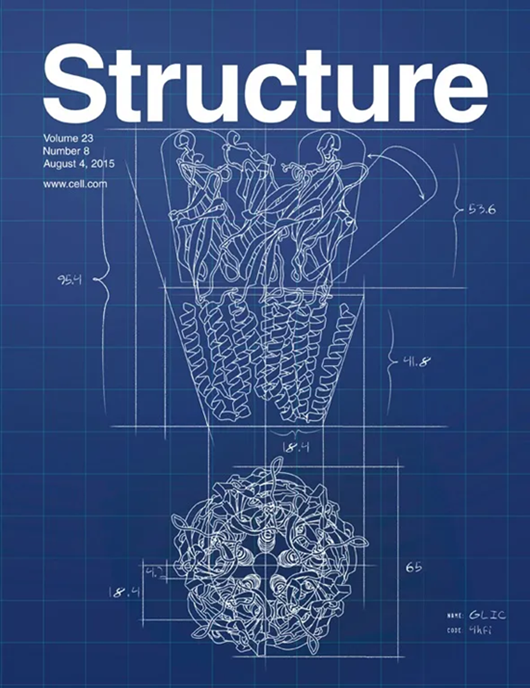ZBTB20在AFP启动子上作用的结构见解
IF 4.3
2区 生物学
Q2 BIOCHEMISTRY & MOLECULAR BIOLOGY
引用次数: 0
摘要
ZBTB20是一种含有C2H2锌指和广泛复合物、tramtrack和bric-à-brac (BTB)结构域的蛋白,对器官发育和代谢稳态至关重要。它的功能依赖于它的dna结合锌指,这些区域内的杂合突变与报春花综合征有关,报春花综合征的特征是各种身体和发育异常。然而,ZBTB20锌指识别DNA的分子基础在很大程度上仍然未知。在这里,我们展示了ZBTB20锌指1-4 (ZF1-4)与小鼠甲胎蛋白(AFP)启动子在−104至−90位置的复合物的晶体结构。结合量热分析,我们确定ZF1-3对AFP启动子的识别至关重要,并确定了参与DNA结合的关键残基。此外,我们的数据使我们能够将报春花综合征突变与dna结合功效的改变联系起来。总的来说,我们的研究为ZBTB20锌指的生理和病理作用提供了机制见解。本文章由计算机程序翻译,如有差异,请以英文原文为准。

Structural insights into ZBTB20 action at the AFP promoter
ZBTB20, a C2H2 zinc finger and broad-complex, tramtrack and bric-à-brac (BTB) domain-containing protein, is crucial for organ development and metabolic homeostasis. Its functionality is dependent on its DNA-binding zinc fingers, and heterozygous mutations within these regions are linked to Primrose syndrome, which is characterized by various physical and developmental abnormalities. However, the molecular basis underlying ZBTB20 zinc finger recognition of DNA remains largely unknown. Here, we present the crystal structure of ZBTB20 zinc fingers 1–4 (ZF1-4) in complex with the mouse alpha-fetoprotein (AFP) promoter in the region spanning positions −104 to −90. In combination with calorimetric analysis, we established that ZF1-3 is essential for the recognition of the AFP promoter and identified key residues involved in DNA binding. Furthermore, our data allow us to correlate Primrose syndrome mutations with alterations in DNA-binding efficacy. Overall, our study provides mechanistic insights into the physiological and pathological roles of ZBTB20 zinc fingers.
求助全文
通过发布文献求助,成功后即可免费获取论文全文。
去求助
来源期刊

Structure
生物-生化与分子生物学
CiteScore
8.90
自引率
1.80%
发文量
155
审稿时长
3-8 weeks
期刊介绍:
Structure aims to publish papers of exceptional interest in the field of structural biology. The journal strives to be essential reading for structural biologists, as well as biologists and biochemists that are interested in macromolecular structure and function. Structure strongly encourages the submission of manuscripts that present structural and molecular insights into biological function and mechanism. Other reports that address fundamental questions in structural biology, such as structure-based examinations of protein evolution, folding, and/or design, will also be considered. We will consider the application of any method, experimental or computational, at high or low resolution, to conduct structural investigations, as long as the method is appropriate for the biological, functional, and mechanistic question(s) being addressed. Likewise, reports describing single-molecule analysis of biological mechanisms are welcome.
In general, the editors encourage submission of experimental structural studies that are enriched by an analysis of structure-activity relationships and will not consider studies that solely report structural information unless the structure or analysis is of exceptional and broad interest. Studies reporting only homology models, de novo models, or molecular dynamics simulations are also discouraged unless the models are informed by or validated by novel experimental data; rationalization of a large body of existing experimental evidence and making testable predictions based on a model or simulation is often not considered sufficient.
 求助内容:
求助内容: 应助结果提醒方式:
应助结果提醒方式:


